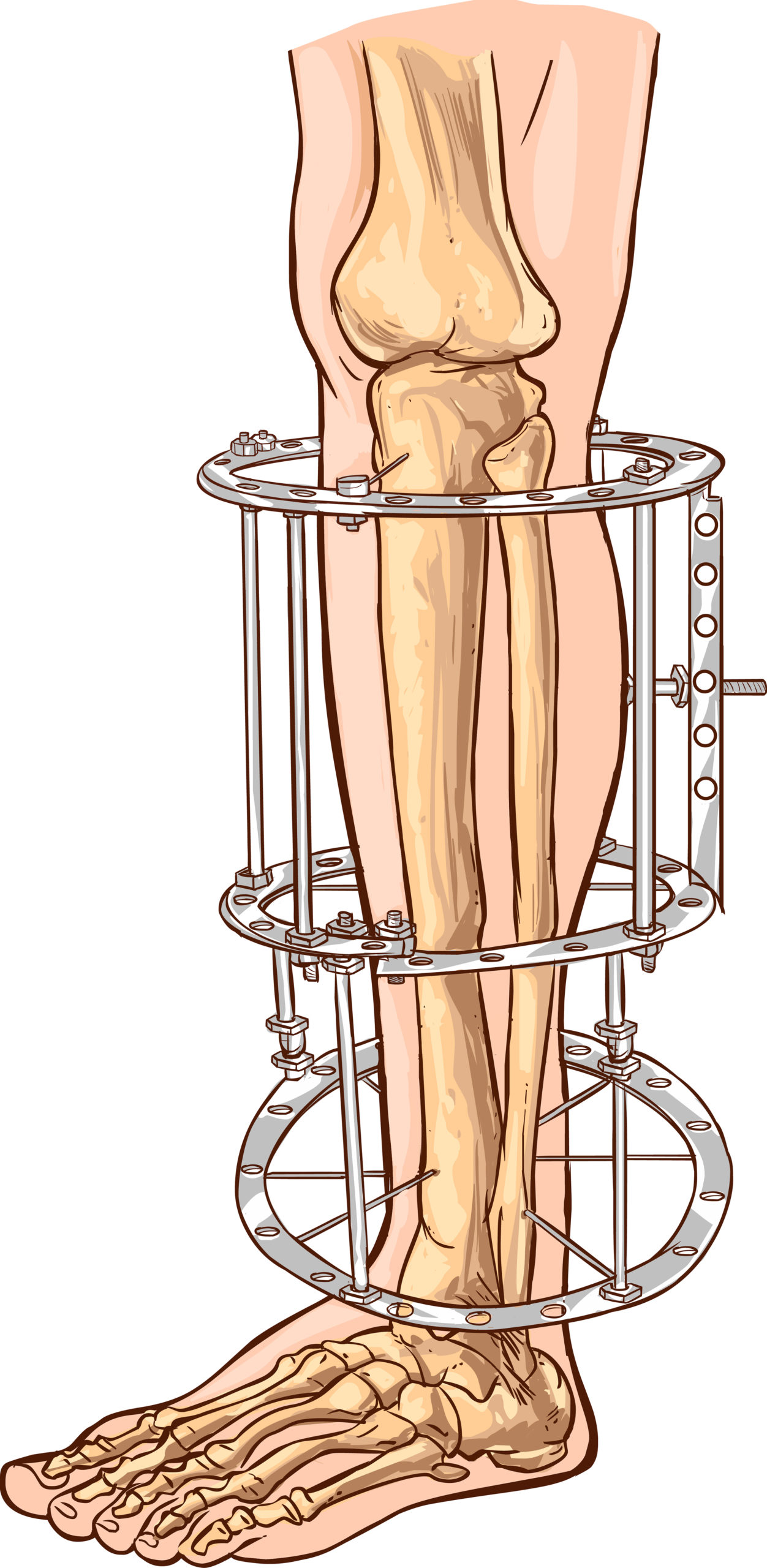Bone lengthening surgery is surgery done to increase the length of a shorter bone. It is also known as limb lengthening surgery. Limb lengthening surgery is the treatment for limb length discrepancy.
Limb length discrepancy or limb length difference refers to one limb (commonly a leg) being longer than the other. There is a difference in the lengths of the legs.
In this article, we shall summarise the causes of limb length discrepancy and also elaborate on the various forms of limb lengthening surgeries
Conditions associated with limb length discrepancy
| Congenital conditions (Conditions child is born with) | Acquired conditions |
| -Congenital short femur | – Perthes disease |
| -Fibula hemimelia | – Growth arrest following trauma |
| -Tibia hemimelia | -Growth arrest following radiation to bone |
| – Hemihypertrophy | -Growth arrest following infection of bone |
| -Posteromedial bowing | -Bone loss following injury or surgery |
Do you need to see a paediatric orthopedic surgeon?
Treatment of limb length discrepancy with bone lengthening surgery
Treatment of discrepancy is broadly divided into 2 main groups. These are non-operative treatment and operative treatment
Non-surgical treatment for limb length discrepancy
Nonsurgical or non-operative treatment is done through the use of orthotics. This can be done in 2ways.
- Shoe inserts are inserted inside the shoe to account for the height difference
- Shoe raises are put on the outside of the shoe.
Shoe inserts or shoe raises are often done for a height difference of more than 2.5cm but less than 4cm.
Surgical treatment for limb length discrepancy
The surgical treatment for a discrepancy of the leg is often done through a process called distraction osteogenesis where a fracture is surgically created and then the two ends of the bone are pulled apart and between these two ends of the bone, a new bone called regenerate is formed.
The kind of lengthening is given a name based on what devices hold the bone during the process of lengthening the bone.
– Lengthening with an external fixator
An external fixator is a metallic device that supports the bone from the outside.
It’s also called a frame or an xfix or exfix.
This can be in the form of a ring fixator that goes around the leg. The other kind of external fixator used for lengthening is called a monorail fixator.
External fixators use wires and pins to hold the bone that is supported by rings or metallic bars.
Lengthening with a ring fixator is often preferred to a monorail fixator because there is more stability with a ring.
– Lengthening with an internal device.
Lengthening with an internal device refers to lengthening over an intramedullary naila or nail. The nails used for lengthening are different from the usual intramedullary nails used to treat fractures.
These special nails have the ability to lengthen out as the bone is lengthening and are even better because they are inside the body contrary to the external fixator.
What happens during the surgery?
You will be given an anesthetic to make sure that you don’t feel any pain during the procedure. Your leg or arm will be cleaned with an antiseptic and then covered in sterile drapes.
The surgeon will use the guidance of an x-ray to confirm the correct placement of the pins and finally, the perfect position to make the bone cut through which the lengthening will be done.
Wounds (incisions) made during surgery will be repaired and covered with a sterile dressing.
Other ways of treating limb length differences or unequal legs
- Stopping the growth on the taller side.
This is done by stopping the function of the growth plate. This can be done by surgically removing the growth plate or inserting screws across the growth plate. This process is called epiphysiodesis.
- Shortening the taller side
This is less ideal but quite effective. The surgeon will cut out a piece of your bone to even out the two sides.
Complications of limb lengthening surgery
These are the complications of bone-lengthening surgery
This happens with external fixators. because the pins communicate with the outside of the body, there can be an infection on the skin which can sometimes extend to the bone.
- Contracture of joints.
The tissues around a joint commonly become tight during lengthening which can, in turn, affect the range of motion of the joint.
- Fracture of the new bone.
- Failure to form new bone /nonunion.
- Injury to nerves and blood vessels.
In conclusion, limb lengthening surgery is an invaluable tool for the management of limb length. The lengthening can be done with an external or an internal device.
